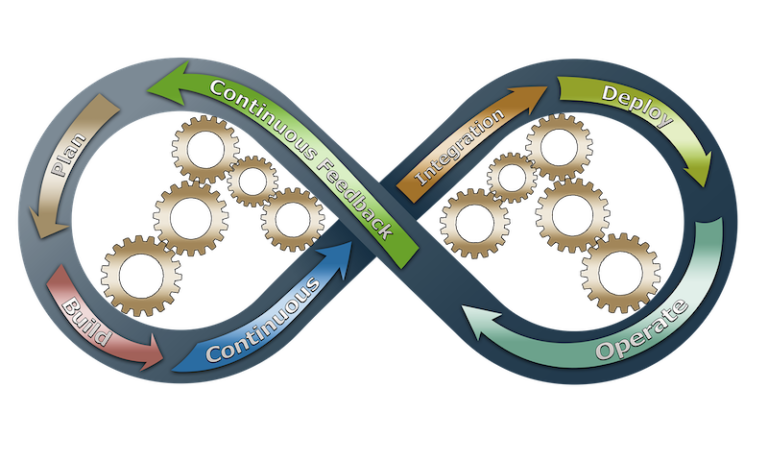Agile Business: Applying Agile Principles Beyond Software Development
Agile business principles can positively impact business operations. Learn about Agile in business and how it can benefit your company.
The software development team is the core of any company in the software industry. Given how crucial this team is, it is necessary to ensure it performs optimally. In order to achieve this, companies make use of various measuring metrics. In this article, we will address some of the best approaches to measuring the effectiveness of your software development team.

As mentioned earlier, software development teams are crucial to the well-being of entire companies. This means that their performance can go a long way in determining whether a company succeeds or not. Against this backdrop, one can easily see how it is necessary to measure your engineering team's performance constantly. For one, this allows you to take such actions as required to improve the team.
Furthermore, software development outsourcing is now commonplace. For most companies, outsourcing serves as a way to access top-notch expertise. Outsourcing providers like YouDigital, for instance, have a pool of talented engineers that your company might struggle to access on its own. In this regard, performance measurement serves as a way of assessing the quality of your outsourced team. This way, you can tell if the external team is capable of meeting your desired standards.
The importance of such an assessment cannot be overemphasized. Notably, in 2020, it was revealed that, on average, 11.4% of investment is lost to poor project performance. This illustrates just how costly poor performance can be to a company. Performance measurement functions to mitigate such outcomes.
Certain metrics are required to measure the performance of software development teams accurately. These metrics are known software development metrics. These are measurable pieces of data involved in the software development process. This data can be a veritable source of information on the team's operations and performance.
While various kinds of data could be used as a software development metric, there are some primary parameters that any company should pay attention to. These parameters include Agile, Operational, and Code metrics. Let's go into details regarding each of these metrics.
One major metric of the Agile approach is lead time. This refers to the time it takes to develop a software product from the idea to the final stage. This metric helps break down the entire development process into stages and their duration. This helps you identify areas that can be improved. Notably, cycle time refers to the period required to complete one unit of work. This can give insight into the time needed to introduce a particular functionality.
Another important Agile metric is velocity. This metric measures the average number of tasks completed by the team in one sprint. In essence, it helps assess the efficiency of the software development team. It could also be helpful in setting realistic timelines. There is also the open/close rate. This metric refers to the number of software development issues reported and solved within a particular time frame.
These metrics can be valuable for improving the team's workflow and creating a better software development process. These metrics are also great for assessing the development process of your outsourced team. IT partners like YouDigital that perform excellently with Agile metrics are typically a better choice for software development outsourcing.
It is extremely difficult and probably impossible to avoid errors when creating software. Nevertheless, it is better when errors occur less and are addressed properly by the team. This is essentially what operational metrics measure. The main metrics here are Mean Time Between Failures (MTBF), Mean Time to Recover (MTTR), and Application Crash Rate.
Mean Time Between Failures (MTBF), as the name indicates, refers to the amount of time that passes between subsequent errors or failures. For this metric, the longer the period between errors, the better. MTBF measures the overall safety of a software product. Mean Time to Recover (MTTR) is the average time required by the team to fix an error or failure with the software. In essence, MTTR is measured from the time an error occurs to the moment it is fixed. Needless to say, the shorter the MTTR, the better.
Lastly, Application Crash Rate is the figure obtained when you divide the number of errors experienced while using the software by the number of times the software was used. This rate provides insights into the probability of a crash occurring when using the software product. Notably, a lower application crash rate indicates less error-prone software.

This parameter is used to determine how complex the program's code is and how easy or difficult it would be to maintain the program. There are a number of source-code metrics that can be used. Many of these metrics are more suited to certain programs than others. Nonetheless, some standard code metrics are often used.
For one, there is code coverage. This indicates the number of lines of code that are being covered by automated tests. Generally, a higher level of code coverage is desirable. Code coverage is also relevant for continuous integration.
Another relevant metric is cyclomatic complexity. As the name suggests, the metric measures the complexity of the code. Typically, a lower value of code complexity is preferred. This is because highly complex codes have a higher chance of errors and problems. Furthermore, it takes longer to fix bugs in a complex code. Also, it takes longer for new team members to understand such codes.
Lastly, there is code churn. This is a graphic representation of the code during the development process. In essence, every addition, deletion, and modification made to the code within a timeframe is displayed. This allows for the identification of irregularities and trends in code development.
It is essential to understand that the various performance metrics are simply tools. This means that their effectiveness is based on how they are used. To use these metrics effectively, it is important to:
It is vital to select the right metrics for your team. These are metrics that convey real value as opposed to focusing on meaningless numbers.
Avoid unrealistic expectations and goals as these are only likely to leave your team frustrated and with a sense of failure.
Communication is key, regardless of your metrics. It is crucial that you clearly communicate what your goals mean to your team.
Undoubtedly, software development metrics are a useful tool for deciding what external team to outsource your software development to. These metrics also provide valuable insights as to how you can optimise your team's performance.
Agile business principles can positively impact business operations. Learn about Agile in business and how it can benefit your company.
Embracing disruptive innovation as a business holds numerous benefits in today's constantly evolving world. Read on to learn more about disruptive technology.
re you looking to hire a virtual CTO? We offer Virtual CTO services and advice to businesses seeking a technological partner. Click here for more details.
REQUEST PROFILE